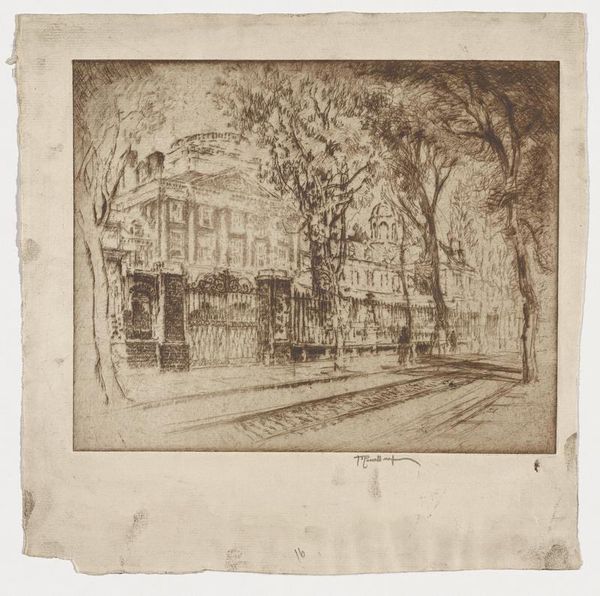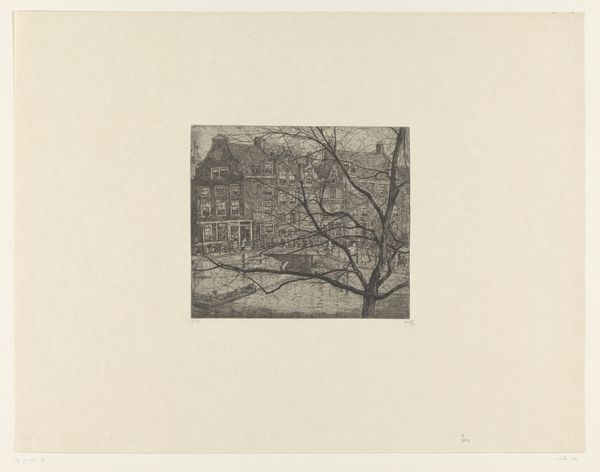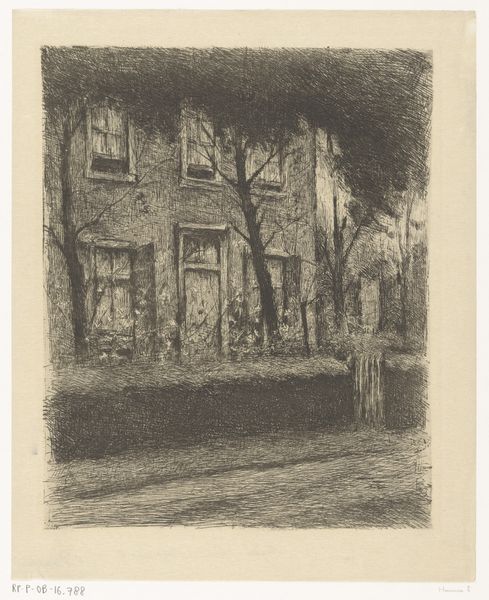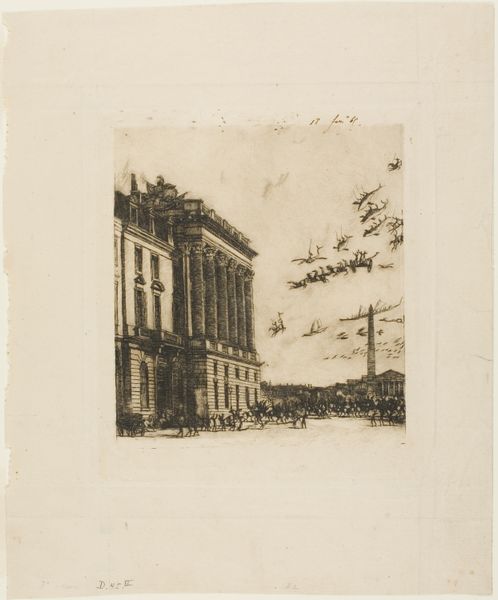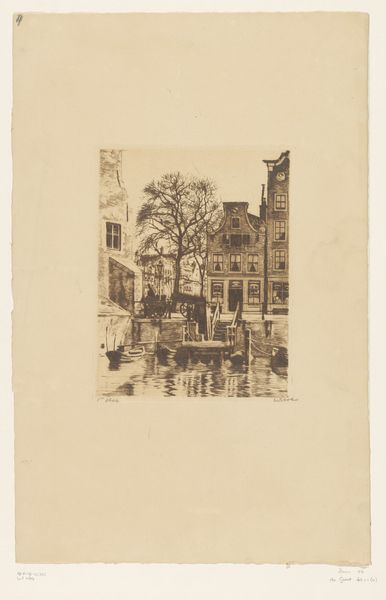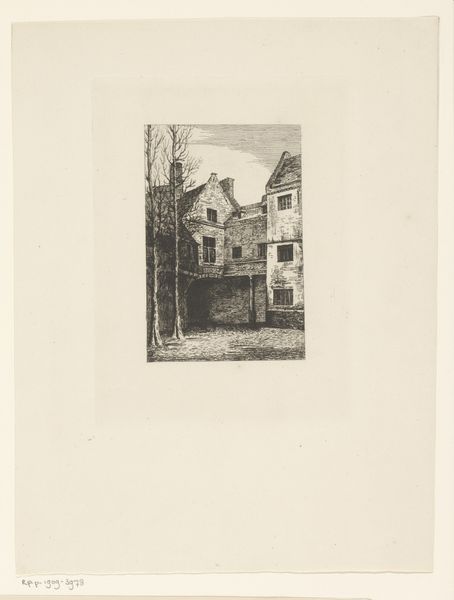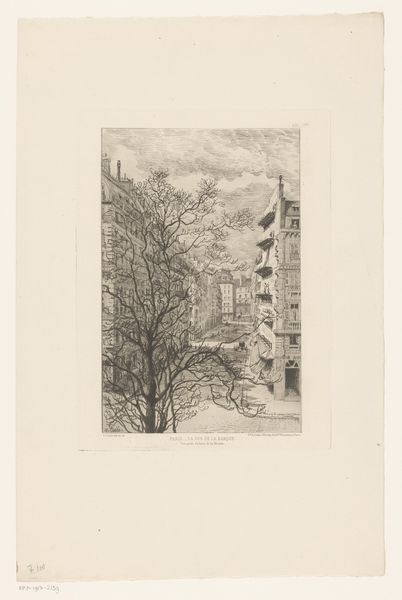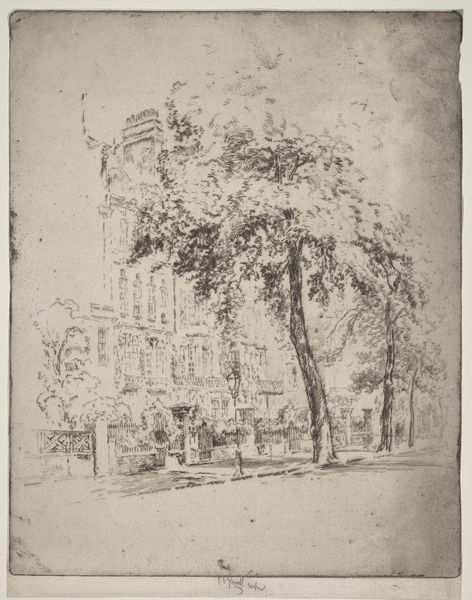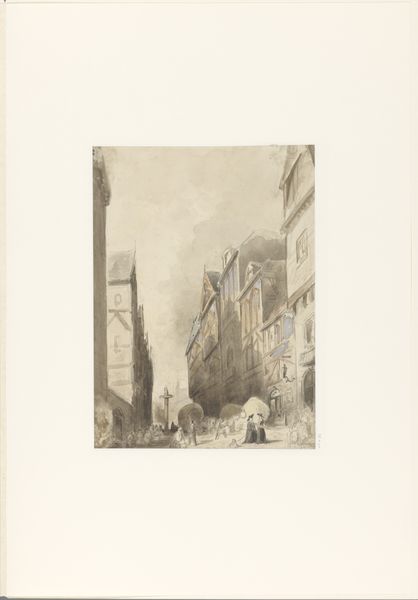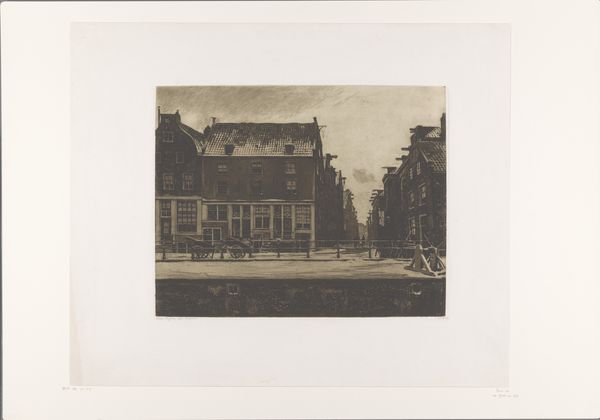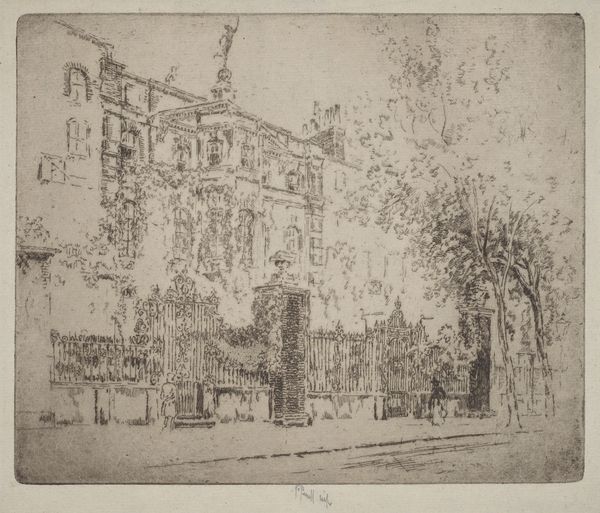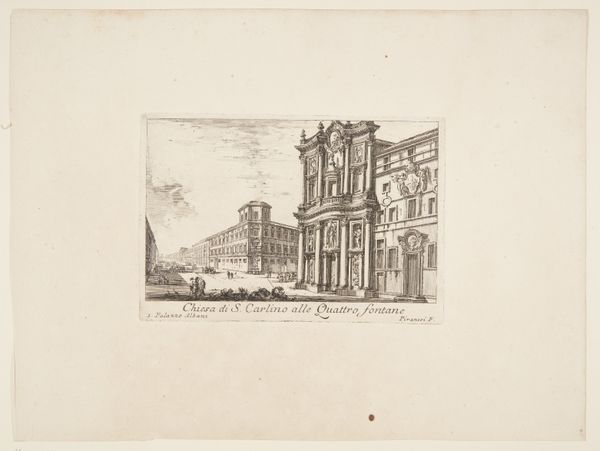
drawing, pencil
#
pencil drawn
#
drawing
#
amateur sketch
#
aged paper
#
light pencil work
#
pencil sketch
#
sketched
#
old engraving style
#
landscape
#
personal sketchbook
#
pencil
#
sketchbook drawing
#
cityscape
#
pencil work
#
academic-art
#
realism
Dimensions: height 207 mm, width 159 mm
Copyright: Rijks Museum: Open Domain
Curator: Before us we have "Herengracht 493 en 495," a pencil drawing by Cornelis Gerardus 't Hooft, likely created sometime between 1801 and 1871. Editor: It's unassuming, isn't it? A quick sketch capturing a quiet moment on the canal. Feels intimate, like flipping through a private sketchbook. The bare trees almost veil the buildings...it’s wistful, melancholy even. Curator: I'm intrigued by the deliberate choice of medium. Pencil allows for a nuanced tonal range and delicate lines that convey the textures of the brick and the aging process inherent in architecture. 't Hooft captures not just the structures, but their relationship with time. We see evidence of use and age. Editor: It does feel very "lived-in." I like that, despite its precision, it has a looseness to it, like a memory sketched down quickly before it faded. What do you make of the compositional choice? It feels so central. Curator: Central composition flattens the perspective, pushing the buildings forward almost like a stage set. This likely reflects the conventions of architectural drawings of the time, which prioritized clear representation. Note also the marks in the foreground, possibly notes made during the sketching process - an important addition from a materialist point of view. Editor: Absolutely. I also appreciate how the artist uses the negative space—the paper itself—to define the sky and water. The sketchy quality almost makes it breathe. You can practically feel that chilly, damp Amsterdam air! Do we know anything about 't Hooft’s connection to this place? Curator: Sadly, details about his personal life are scant, but given his artistic output, he likely spent a considerable amount of time observing and documenting the built environment around him, maybe cataloging for business reasons. Editor: A document of place, time, and technique! It makes me consider what my neighborhood will look like two hundred years from now, sketched by a future observer, bearing the marks of time and change, or still being a solid place to trade with others... Curator: Precisely! This work makes me consider what will still be in operation as a commodity from our time in centuries to come. A poignant consideration given the passage of time marked here.
Comments
No comments
Be the first to comment and join the conversation on the ultimate creative platform.
